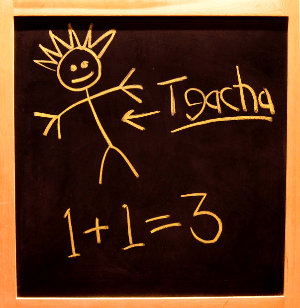How To Coach The Best Performance Out Of People, According To Research
.
“Explanation, demonstration, imitation, correction, and repetition.”
Break down proper technique, quickly correct errors and get them to repeat until it’s second nature.
Via The Talent Code: Greatness Isn’t Born. It’s Grown. Here’s How:
Gallimore and Tharp recorded and coded 2,326 discrete acts of teaching. Of them, a mere 6.9 percent were compliments. Only 6.6 percent were expressions of displeasure. But 75 percent were pure information: what to do, how to do it, when to intensify an activity. One of Wooden’s most frequent forms of teaching was a three-part instruction where he modeled the right way to do something, showed the incorrect way, and then remodeled the right way, a sequence that appeared in Gallimore and Tharp’s notes as M +, M −, M +; it happened so often they named it a “Wooden.” As Gallimore and Tharp wrote, Wooden’s “demonstrations rarely take longer than three seconds, but are of such clarity that they leave an image in memory much like a textbook sketch.”
And…
Via The Talent Code: Greatness Isn’t Born. It’s Grown. Here’s How:
His skill resided in the Gatling-gun rattle of targeted information he fired at his players. This, not that. Here, not there. His words and gestures served as short, sharp impulses that showed his players the correct way to do something. He was seeing and fixing errors.
And…
Via The Talent Code: Greatness Isn’t Born. It’s Grown. Here’s How:
He taught in chunks, using what he called the “whole-part method”— he would teach players an entire move, then break it down to work on its elemental actions. He formulated laws of learning (which might be retitled laws of myelin): explanation, demonstration, imitation, correction, and repetition. “Don’t look for the big, quick improvement. Seek the small improvement one day at a time. That’s the only way it happens— and when it happens, it lasts,” he wrote in The Wisdom of Wooden. “The importance of repetition until automaticity cannot be overstated,” he said in You Haven’t Taught Until They Have Learned, authored by Gallimore and former Wooden player Swen Nater. “Repetition is the key to learning.” Most people regard Wooden’s success as a product of his humble, thoughtful, inspiring character. But Gallimore and Tharp showed that his success was a result less of his character than of his error-centered, well-planned, information-rich practices.
And these techniques don’t just work with sports.
Via The Talent Code: Greatness Isn’t Born. It’s Grown. Here’s How:
“We started approaching the school with the idea of, what would John Wooden do?” Slowly, steadily, KEEP began to take off. Reading scores rose, comprehension improved, and the school, which had previously lagged far behind national averages in standardized test scores, was soon exceeding them by a healthy margin. In 1993 Gallimore and Tharp’s KEEP project received the Grawemeyer Award, one of education’s highest honors…
Join over 180,000 readers. Get a free weekly update via email here.
Related posts:
New Harvard Research Reveals A Fun Way To Be More Successful




